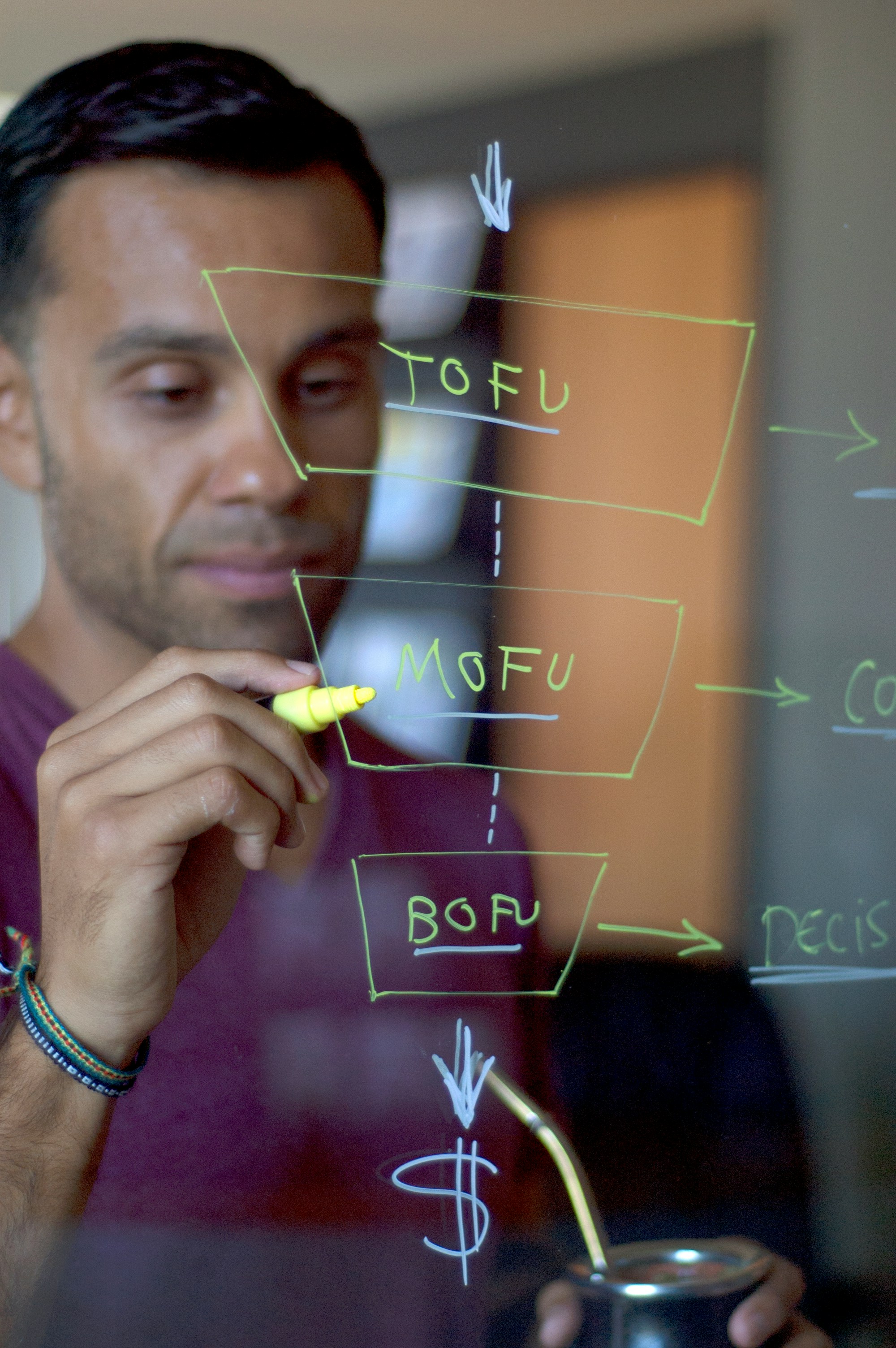Unlocking CRO Success with FSHE (Funnel-Stage Hypothesis Engine)
Learn why identifying your customer's funnel stage is crucial in CRO and how to apply FSHE effectively.

Introduction: Why FSHE Matters in CRO
Conversion Rate Optimization (CRO) goes beyond simple tweaks and A/B tests. Truly impactful CRO hinges on deeply understanding where your customers are in their buying journey—a process known as funnel-stage awareness. This is where the Funnel-Stage Hypothesis Engine (FSHE) framework excels.
FSHE allows you to:
- Identify your customer’s funnel stage (TOFU, MOFU, BOFU, LTV)
- Formulate precise hypotheses based on their current stage
- Apply targeted psychological biases and strategies
- Execute smarter tests that yield meaningful insights and results
The Importance of Funnel Stage Identification
Customers behave differently at each stage of their journey:
Top-of-Funnel (TOFU)
- Intent: Exploring and learning.
- Motivation: Curiosity, education, awareness.
- Best Strategies: Educational content, social proof, authority.
- Relevant Biases: Authority Bias, Social Proof.
Middle-of-Funnel (MOFU)
- Intent: Evaluating and comparing.
- Motivation: Information gathering, trust-building.
- Best Strategies: Product comparisons, testimonials, risk-reducers.
- Relevant Biases: Confirmation Bias, Risk Aversion.
Bottom-of-Funnel (BOFU)
- Intent: Deciding and purchasing.
- Motivation: Confidence, urgency, clarity.
- Best Strategies: Scarcity, urgency triggers, streamlined checkout.
- Relevant Biases: Scarcity Bias, Loss Aversion.
Lifetime Value (LTV)
- Intent: Returning and advocating.
- Motivation: Loyalty, satisfaction, personalization.
- Best Strategies: Personalized offers, loyalty programs, referral incentives.
- Relevant Biases: Endowment Effect, Reciprocity.
By accurately identifying your customer’s funnel stage, you position your CRO efforts for maximum impact.
How to Identify Your Customer’s Funnel Stage
1. Behavioral Analytics (Google Analytics, Mixpanel)
Look at data points such as:
- Frequency of visits
- Specific page interactions (homepage vs. product page vs. checkout)
- Engagement metrics (time spent, scroll depth)
2. Heatmaps and Session Recordings (Hotjar, Crazy Egg)
Identify patterns like:
- Areas of high engagement
- Friction points and drop-off areas
- Navigation behaviors
3. Customer Surveys and Feedback
Collect direct insights into:
- User motivations
- Objections at various stages
- Perceptions and intentions
4. Tagging & Segmentation Strategy
Use tags such as:
- Visit count (new vs. returning visitors)
- PDP (Product Detail Page) views
- Cart status (abandoned vs. completed)
- UTM parameters (source and campaign analysis)
Formulating Effective FSHE Hypotheses
Once you've clearly identified the customer funnel stages, you can craft precise hypotheses for targeted experimentation:
Example Hypothesis (MOFU stage):
"Visitors comparing products will be more likely to convert if provided clear side-by-side feature comparisons because this leverages confirmation bias and reduces decision anxiety."
Your hypotheses should follow a clear structure:
- Funnel Stage
- Identified user intent or friction
- Proposed solution
- Underlying psychological rationale
Matching CRO Strategies and Biases with Funnel Stages
With clear funnel-stage segmentation, you can intentionally align your strategies and cognitive biases:
| Funnel Stage | Recommended CRO Strategy | Cognitive Biases |
|---|---|---|
| TOFU | Educational Content, Expert Endorsements | Authority, Social Proof |
| MOFU | Comparisons, Testimonials, Guarantees | Confirmation, Risk Aversion |
| BOFU | Limited Offers, Simplified Checkout | Scarcity, Loss Aversion |
| LTV | Personalized Experiences, Rewards | Endowment Effect, Reciprocity |
Testing and Iterating with FSHE
After clearly identifying funnel stages, creating hypotheses, and aligning biases, execute your experiments systematically:
- Targeted A/B Tests: Run tests explicitly designed for each funnel stage.
- Segmented Analysis: Analyze results based on funnel segments, not aggregate data.
- Iterative Improvement: Use insights to refine hypotheses continually and optimize funnel-specific conversions.
Conclusion: Leveling Up Your CRO with FSHE
Understanding the FSHE framework transforms generic CRO tactics into powerful, funnel-aware strategies. By accurately identifying your customer's funnel stage and applying stage-specific biases and testing, you significantly enhance your ability to drive meaningful growth and conversions.
Master the FSHE framework, and you'll unlock a new level of precision, insight, and effectiveness in your CRO strategy.
CRO That Drives Revenue, Not Just Clicks
I help DTC brands turn browsers into buyers. If you're scaling an online store and care about performance, UX, and data-backed growth—this is where real conversion strategies live.